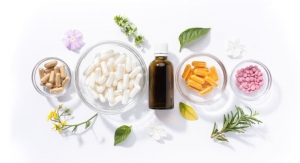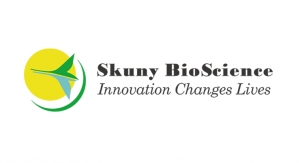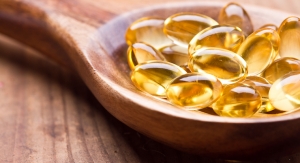Joanna Cosgrove11.09.09
As the penchant for green energy continues to expand, traditional fossil fuels have yielded to share the road with more earth-friendly bio-fuel options. Hybrid, hydrogen and even corn-based ethanol have become common terminology in the quest for alternative energy sources and now a new form of fuel is set to join the fray: algal oil.
Though the concept of turning algae into fuel has been researched by the Department of Energy since the mid-1970s, the business of extracting the oil has been little more than an innovative idea…until now. LiveFuels Inc., of San Carlos, CA, devised a way to harvest the algal oil and it involves the assistance of fish.
Marketed by the company as a sustainable and cost effective fuel, LiveFuels grows a blend of native algae species in low-cost, open-water systems using natural systems to keep costs low (higher costs are associated with growing monocultures of algae, sometimes genetically modified strains, within expensive enclosures).
The company said the long-term and widespread runoff of fertilizers and other agricultural wastes into waterways has caused large, fast-growing blooms of algae in the ocean. When uncontrolled, these blooms disrupt, and potentially collapse, natural ecosystems. However, at the same time, the blooms represent a veritable untapped energy resource.
LiveFuels grows and harvests algae in estuarine environments, at the intersection of rivers carrying agricultural waste nutrients and the open ocean, in order to capture the energy and resources of the algal blooms that already occur at these locations.
Because conventional machinery is unable to harvest microscopic algae from large volumes of water at low cost, LiveFuels uses a natural mixture of minnow-sized, oil-rich, “algae grazing,” fish that consume the algae. The fish are rendered and the resulting oil is similar to omega 3 oil supplements but can be used to power motor vehicles. Byproducts of the rendered fish are not wasted, instead they are put to use as a source of protein for animal feed and as a phosphate source (from the fish bones) for fertilizers.
According to an article in the New York Times, LiveFuels has been experimenting with the concept at nine 5-acre ponds in Texas, where it has been growing algae since 2006 and testing different breeds of fish to harvest the oil most efficiently. The eventual goal is to allow netted schools of fish to graze in places with harmful algae blooms, such as in the open ocean or perhaps around decommissioned oil rigs.
In mid-August the company announced the start of pilot operations at its test facility in Brownsville, TX. Consisting of 45 acres of open saltwater ponds, the facility will be used for research on optimizing algal productivity and increasing the rates of conversion of biomass into renewable oils.
“Our new Brownsville facility allows us to explore a system-level solution for producing algal biofuels,” said LiveFuels CEO Lissa Morgenthaler-Jones. “By harnessing the power of natural systems, we hope to achieve what has eluded the biofuels community for decades—cost effectiveness, scalability, and sustainability.”
At the Brownsville facility, LiveFuels will conduct research on optimizing the productivity of natural aquatic ecosystems through biological and environmental conditions. The results will be used for an expansion to full-scale commercial operations along the coast of Louisiana. The commercial facilities will be designed to harness flows of agricultural pollution from the Mississippi River that can be used as nutrients for generating algal blooms. By removing these nutrients from river flows, LiveFuels’ systems also mitigate the impacts of agricultural pollution in the open ocean.
To date, LiveFuels has filed 10 U.S. patents for its proprietary approach to growing and harvesting algal biomass.
LiveFuels isn’t the only company hot on fleshing out the algal biofuel idea. In August, Martek Biosciences Corporation, Columbia, MD, announced the signing of a Joint Development Agreement (JDA) with BP to work on the production of microbial oils for biofuel applications. The partnership combines a broad technology platform and operational capabilities to advance the development of a step-change technology for the conversion of sugars into biodiesel. Under the terms of the multi-year agreement, Martek and BP will work together to establish proof of concept for large-scale, cost effective microbial biodiesel production through fermentation.
Under the terms of the deal, BP will contribute up to $10 million to the initial phase of the collaboration to leverage Martek’s expertise in microbial oil production and BP’s production and commercialization experience in biofuels. Martek will perform the biotechnology research and development associated with this initial phase, while BP will contribute to its integration within the biofuels value chain.
Though the concept of turning algae into fuel has been researched by the Department of Energy since the mid-1970s, the business of extracting the oil has been little more than an innovative idea…until now. LiveFuels Inc., of San Carlos, CA, devised a way to harvest the algal oil and it involves the assistance of fish.
Marketed by the company as a sustainable and cost effective fuel, LiveFuels grows a blend of native algae species in low-cost, open-water systems using natural systems to keep costs low (higher costs are associated with growing monocultures of algae, sometimes genetically modified strains, within expensive enclosures).
The company said the long-term and widespread runoff of fertilizers and other agricultural wastes into waterways has caused large, fast-growing blooms of algae in the ocean. When uncontrolled, these blooms disrupt, and potentially collapse, natural ecosystems. However, at the same time, the blooms represent a veritable untapped energy resource.
LiveFuels grows and harvests algae in estuarine environments, at the intersection of rivers carrying agricultural waste nutrients and the open ocean, in order to capture the energy and resources of the algal blooms that already occur at these locations.
Because conventional machinery is unable to harvest microscopic algae from large volumes of water at low cost, LiveFuels uses a natural mixture of minnow-sized, oil-rich, “algae grazing,” fish that consume the algae. The fish are rendered and the resulting oil is similar to omega 3 oil supplements but can be used to power motor vehicles. Byproducts of the rendered fish are not wasted, instead they are put to use as a source of protein for animal feed and as a phosphate source (from the fish bones) for fertilizers.
According to an article in the New York Times, LiveFuels has been experimenting with the concept at nine 5-acre ponds in Texas, where it has been growing algae since 2006 and testing different breeds of fish to harvest the oil most efficiently. The eventual goal is to allow netted schools of fish to graze in places with harmful algae blooms, such as in the open ocean or perhaps around decommissioned oil rigs.
In mid-August the company announced the start of pilot operations at its test facility in Brownsville, TX. Consisting of 45 acres of open saltwater ponds, the facility will be used for research on optimizing algal productivity and increasing the rates of conversion of biomass into renewable oils.
“Our new Brownsville facility allows us to explore a system-level solution for producing algal biofuels,” said LiveFuels CEO Lissa Morgenthaler-Jones. “By harnessing the power of natural systems, we hope to achieve what has eluded the biofuels community for decades—cost effectiveness, scalability, and sustainability.”
At the Brownsville facility, LiveFuels will conduct research on optimizing the productivity of natural aquatic ecosystems through biological and environmental conditions. The results will be used for an expansion to full-scale commercial operations along the coast of Louisiana. The commercial facilities will be designed to harness flows of agricultural pollution from the Mississippi River that can be used as nutrients for generating algal blooms. By removing these nutrients from river flows, LiveFuels’ systems also mitigate the impacts of agricultural pollution in the open ocean.
To date, LiveFuels has filed 10 U.S. patents for its proprietary approach to growing and harvesting algal biomass.
Advancing a Great Idea
LiveFuels isn’t the only company hot on fleshing out the algal biofuel idea. In August, Martek Biosciences Corporation, Columbia, MD, announced the signing of a Joint Development Agreement (JDA) with BP to work on the production of microbial oils for biofuel applications. The partnership combines a broad technology platform and operational capabilities to advance the development of a step-change technology for the conversion of sugars into biodiesel. Under the terms of the multi-year agreement, Martek and BP will work together to establish proof of concept for large-scale, cost effective microbial biodiesel production through fermentation.
Under the terms of the deal, BP will contribute up to $10 million to the initial phase of the collaboration to leverage Martek’s expertise in microbial oil production and BP’s production and commercialization experience in biofuels. Martek will perform the biotechnology research and development associated with this initial phase, while BP will contribute to its integration within the biofuels value chain.


























